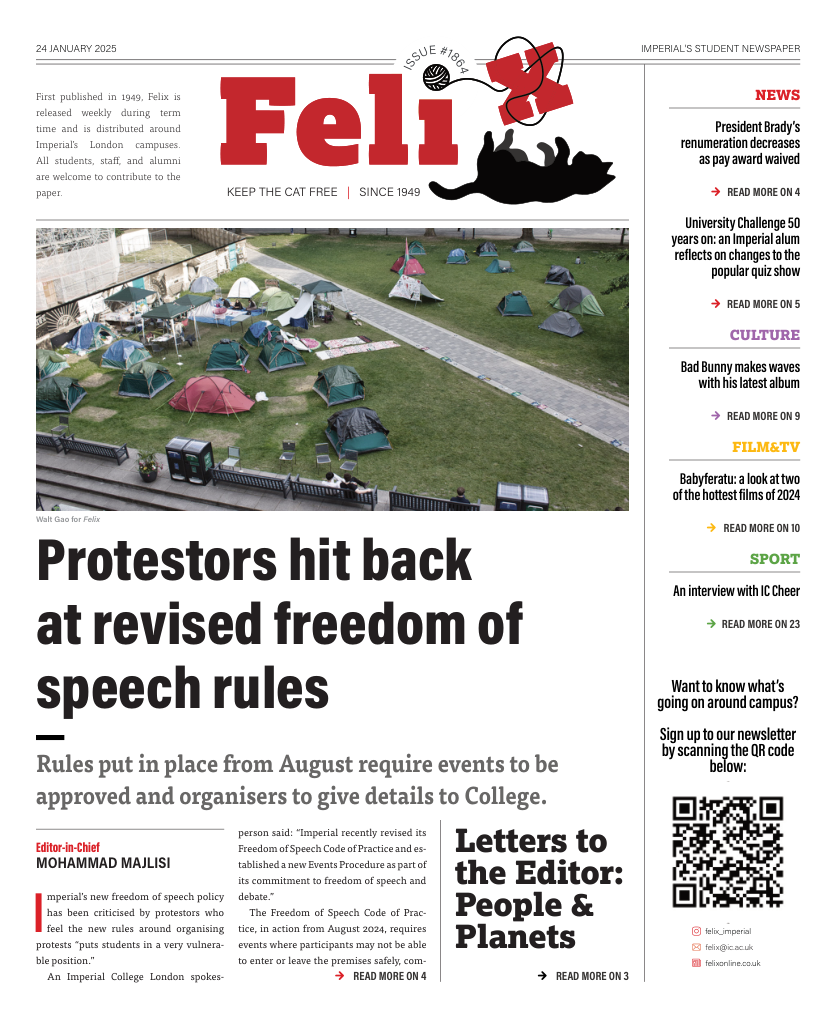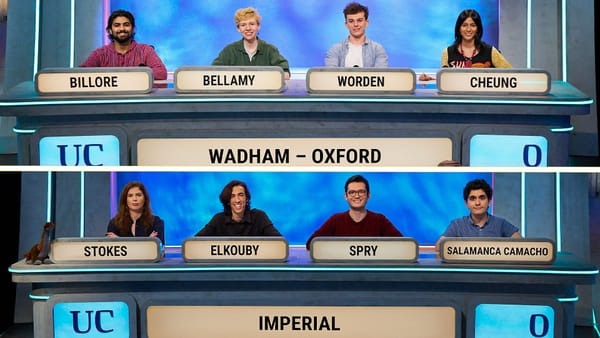Meet the elusive team behind the Imperial Marriage Pact
Felix interviews the team behind the project to find "the one"
Eagle-eyed students may have seen posters popping up around campus over the past few weeks advertising the "Imperial Marriage Pact", an algorithm-based form that matches students to find the optimal life partner.
Earlier this week, Felix sat down with the team behind the Marriage Pact, and discussed what, how, and why they decided to bring the Pact here.
"We're in our first year, we're all tired of applying to spring week internships, so we just wanted to have a way to use the maths knowledge we learned, because we don't just want to go to school, study, and go home," said one of the founders. The Marriage Pact drew attention because it was "based on a mathematical algorithm", so they "grew really interested in this topic".
The basic premise of the pact is that once a partner is determined, and if both parties remain single by age 30, both parties are encouraged to form a relationship.
The Marriage Pact, inspired by the Gale-Shapley algorithm which creates the most stable matches, was created by Liam McGregor and Sophia Sterling-Angus in 2017 as part of their final project for an Economics module at Stanford University. The Marriage Pact has since been enacted at 100 universities, including Oxford in 2022, although the version being carried out at Imperial is not affiliated with the official company set up by McGregor.
The founders, who wish to remain anonymous, haven't even told their friends of their plans to bring this onto Imperial's campuses. It was tough to socialise, despite their belief that "university is a perfect place to meet your soulmate or meet other friends".
Whilst the Marriage Pact company doesn't publicise their algorithm, the founders knew of the first principle it came from: the Gale-Shapley Algorithm. "It's based around how many stable marriages you can form between two sets of, for example, male and female students", explained one of the founders. Once the sorting is done and pairs are matched, there wouldn't be other people more compatible "in different groups who would rather be with each other. And that's a stable marriage".
However, the founders were keen not to ensure the partnerships were heteronormative. "There's a lot of nuances", said one founder, explaining how they had to "work around" pairing based on only male and female groups. "There's also the aspect of whether we want to pair people up just because they're similar, or we want to pair actually opposite characteristics together."
Being STEM students, the founders naturally decided to focus on the "back end" of the algorithm. The survey, comprised of 50 questions, relies on anonymising the data and assigning mathematical values. There is no way for someone to be identified via the dataset.
They spent a Sunday to code "from 9am all the way to 6pm" and "just figured it out" with some help from a professor they knew who specialises in these types of algorithms.
As of Friday 17th January the team had already received over 100 submissions. Mainly done through word of mouth, the team recently launched their Instagram profile (@imperialmarriagepact) and are hoping to get more submissions before the form closes on 3rd February. Results should be out by Valentine's Day, the team hope. To advertise they printed posters and pasted them around campus, as well as posting some through students' letterboxes.
When asked if there were any major lessons they found along the way, the team said, "Don't stick posters on painted walls."








